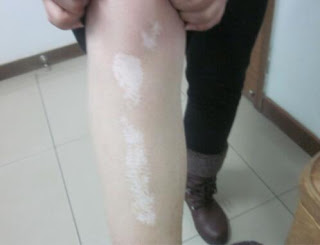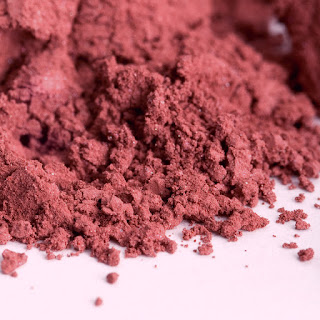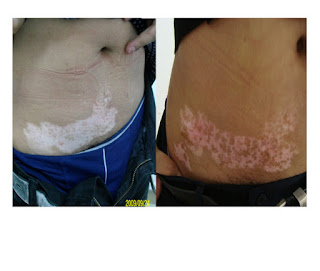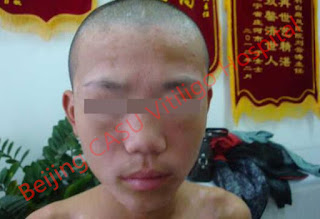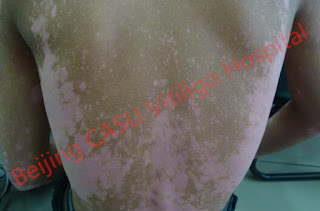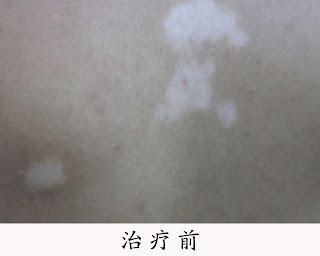Vitiligo is a long-term skin problem that produces white depigmentation
patches that develop and grow in certain sections of skin.
Schallreuter and team analyzed 2,411 patients from several countries with vitiligo. Fifty-seven (2.4%) of them were diagnosed with SSV (strictly segmental vitiligo) and 76 (3.2%) were diagnosed with mixed vitiligo, which is SSV plus NSV (non-segmental vitiligo).
They discovered that those with SSV with a specific nerval distribution involving eyelashes and skin showed the same oxidative stress found in the much more common general NSV. General NSV is associated with decreased antioxidant capacities, including thioredoxin reductase, catalase, and the repair mechanisms methionine sulfoxide reductases.
They found that PC-KUS treatment led to successful patient outcomes - patients' pigmentation in their skin and eyelashes was restored - i.e. they recovered their original skin and hair color.
"For generations, numerous remedies have been concocted to hide gray hair. but now, for the first time, an actual treatment that gets to the root of the problem has been developed.
While this is exciting news, what's even more exciting is that this also works for vitiligo. This condition, while technically cosmetic, can have serious socio-emotional effects of people. Developing an effective treatment for this condition has the potential to radically improve many people's lives."
Schallreuter and team analyzed 2,411 patients from several countries with vitiligo. Fifty-seven (2.4%) of them were diagnosed with SSV (strictly segmental vitiligo) and 76 (3.2%) were diagnosed with mixed vitiligo, which is SSV plus NSV (non-segmental vitiligo).
They discovered that those with SSV with a specific nerval distribution involving eyelashes and skin showed the same oxidative stress found in the much more common general NSV. General NSV is associated with decreased antioxidant capacities, including thioredoxin reductase, catalase, and the repair mechanisms methionine sulfoxide reductases.
They found that PC-KUS treatment led to successful patient outcomes - patients' pigmentation in their skin and eyelashes was restored - i.e. they recovered their original skin and hair color.
"For generations, numerous remedies have been concocted to hide gray hair. but now, for the first time, an actual treatment that gets to the root of the problem has been developed.
While this is exciting news, what's even more exciting is that this also works for vitiligo. This condition, while technically cosmetic, can have serious socio-emotional effects of people. Developing an effective treatment for this condition has the potential to radically improve many people's lives."
